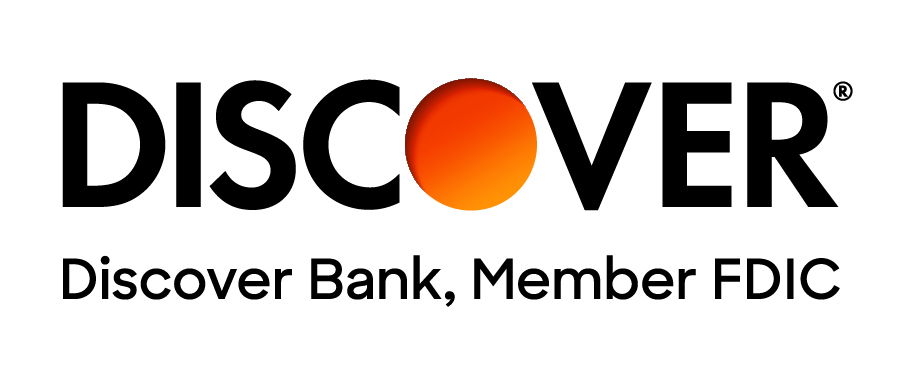Each student’s path is different, and so are their financial needs. Don’t let expenses stop you from reaching your college dreams. While community colleges are generally more budget-friendly than four-year universities, costs can still pile up. The great news? There are many resources available. From federal and state financial aid to grants and scholarship, there are ways to make college costs more manageable and ease the financial stress.
Cash Flow Your Education
One of the biggest benefits of community college is its affordability. The low costs, in comparison to traditional institutions make it possible for some students to cash flow their education, meaning they can pay cash as they go, avoiding the need for student loans. This may mean only attending college part-time*, but it’s a great way to earn your degree without going into debt.
*If you are planning on attending college part-time and you are hoping to receive financial aid make sure you take some time to discuss your enrollment with financial aid. While you may be eligible for grants for part-time enrollment, most student loans require you to be enrolled at least in a half-time status. Your school will be able to tell you what is considered part-time, half-time, and full-time.
- Federal student loans are available to most students attending community college. Students can apply by filling out the Free Application for Federal Student Aid (FAFSA).
- Other potential sources of funding include grants and scholarships, veterans' benefits, employer tuition assistance programs, state financial aid, and income-based repayment plans,
- The low costs of a community college in comparison to a four-year college, make it possible for some students to pay cash as they go, avoiding the need for student loans.
Tuition Payment Plan
While community college can be a more affordable option, paying for a whole semester's tuition upfront can still feel overwhelming. That's why most community colleges offer tuition payment plans to help ease the burden.
To understand the details of the payment plans at your school, it's essential to talk to your college counselor. Different plans may have different requirements, like paying off the balance before the term begins or making monthly payments throughout the term. It's also important to know who manages the payment plan at your school - whether it's the school itself or an external service. And don't forget to consider your commitment to making payments, even if you drop classes or withdraw. If there's a third-party involved, take the time to carefully review their terms and conditions.
In short, if you're worried about paying for community college all at once, exploring a tuition payment plan may be the solution you need.
Look for a Job with Tuition Assistance
If you’re in a position where you will be working your way through school, you may want to look for an employer that offers tuition assistance. Plenty of companies provide tuition assistance or tuition reimbursement for employees, and these benefits may be available for part-time and full-time employees.
For companies that do offer tuition assistance or reimbursement, there will likely be specific terms and conditions that you’d have to agree to or eligibility requirements you’ll have to fulfill in order to qualify.
For example, many companies only provide assistance for job-related credits or coursework, whereas others may provide assistance for getting a degree not connected to your job. Some employers may have an agreement with a specific school, like Starbucks and ASU.
If you are able to secure tuition assistance or reimbursement from your employer, it’s good practice to finish your courses, degree, certification, etc. Be sure to read the fine print, your employers may require you to meet a certain GPA to receive reimbursement or to remain with the company for a certain period of time after completing your program.
File the FAFSA
In order to qualify for federal aid like federal work-study, grants, and student loans, you must file the FAFSA® (Free Application for Federal Student Aid). In addition to receiving federal student loans, remember that completing your FAFSA may be significant for you to receive financial aid from your state or school. Assuming you won’t qualify for anything can cost you! The FAFSA becomes available on October 1 each year for the upcoming academic year. We recommend filing as soon as possible to maximize your aid.
Work Study
For students with financial need looking for another way to cash flow their way through community college, the Federal Work-Study program is a great way to accomplish that. If your school participates in the Federal Work-Study Program, you may be able to secure a part-time job with your school or with a part-time job that’s off-campus but is still part of the Federal Work-Study program. Work-study eligibility is determined by your school based on your FAFSA.
State Aid
Prospective and current community college students can receive help to pay for their tuition with financial aid offered by their respective state. State aid for college students varies by state. Also, many states have financial aid programs for students who are state residents and attending a community college within the state. Furthermore, a student’s eligibility for state aid may depend on their financial need, and states typically utilize the Free Application for Federal Student Aid, or FAFSA, to determine that.
Tuition-Free Programs
Tuition-free programs, also known as promise programs, are being adopted by a number of states. Created to help tackle the rising cost of higher education and boost matriculation for lower-income students, these promise programs are typically available for students continuing their education at a local two-year institution. Students looking to save money while they’re enrolled in community college could benefit from one of these programs; however, promise programs are not available everywhere, and students should research to see if any exist in their state or for their choice community college. In addition, promise programs may have unique eligibility requirements such as full-time enrollment, minimum GPA or ACT/SAT score, residency status, field of study, etc.
Some of the more renowned promise programs include, but are not limited to, the following:
- California College Promise Grant
- Nevada Promise Scholarship
- Rhode Island Promise
- Tennessee Promise
- The Kalamazoo Promise (Michigan)
Scholarships
Most students believe that scholarships are only for students attending four-year schools, but this is not the case. If you plan to attend community college, research and apply for scholarships to help offset your costs. There are plenty of scholarships available to community college students, and there are number of scholarships for students transferring from a community college to go to a four-year college or university. Here are some general scholarship opportunities that could help you pay for community college:
- Coca-Cola Leaders of Promise Programs (Administered by Phi Theta Kappa)
- GEICO Pathway to Completion Associate Degree Scholarship
- Horatio Alger Association Career and Technical Scholarships
Grants
A grant is a great source of financial aid for students who are worried about paying for community college because it’s considered gift aid, which means it doesn’t have to be paid back. With federal, state, and institutional financial aid programs available, community college students may have different grants at their disposal to help them pay for school. Unlike scholarships which are typically merit-based, grants are often awarded based on need, even though you may see some private organizations use the term interchangeably.
Pell Grants
The Pell Grant is a federal grant available to students with financial need who are attending an eligible college or university. The maximum Pell Grant is $7,395 for 2025 - 2026.
To see if you’re eligible for the Federal Pell Grant, you must complete the FAFSA. Many students miss out on the Pell Grant simply because they don’t think they will qualify, and that assumption can cost you.
State/Institutional Grants
In addition to the Federal Pell Grant, there are statewide and institutional grants that community college students should consider as well. Many states provide financial aid exclusively for students to attend colleges and universities within the state. In many cases, this statewide financial aid may only be available for students who are residents of the state. On the other hand, prospective community college students may also discover grants offered to students attending specific colleges, or institutional grants. The best way to find out about these is to read through your school’s financial aid offerings on its website or contact the financial aid office.
Borrow Federal Student Loans
If it turns out that you need to borrow student loans for community college, it’s best if you start with federal student loans first. Not all community colleges may participate in the federal student loan program, but if your school does this money can help you cover your college costs. As an undergraduate student, federal student loans may offer a low fixed interest rate to all borrowers and flexible repayment terms. With federal student loans, you may qualify for subsidized or unsubsidized loans. Keep in mind, to receive federal student loans you need to be considered enrolled at least half-time in an eligible program. Talk to financial aid if you have any questions about your eligibility.
Subsidized Student Loans
Subsidized Student Loans, also known as Subsidized Stafford Loans, are some of the best loans available for undergraduate students with demonstrated financial need. For these loans, the government pays the interest while you’re enrolled at least half-time, during any period of authorized deferment, and also during the grace period.
The current interest rate for a Subsidized Student Loan is 6.39% for loans disbursed between July 1, 2025 and June 30, 2026.
Unsubsidized Student Loans
Unsubsidized Student Loans are federal student loans that students can get, even if they do not demonstrate financial need. One fundamental difference, all accrued interest is the responsibility of the borrower to repay, the government does not pay any interest on an unsubsidized loan. If you decide to take out an unsubsidized loan, keep an eye on your interest and make interest payments while in school if you can.
For undergraduate students, the current interest rate for an Unsubsidized Student Loan for loans disbursed between July 1, 2025 and June 30, 2026 is 6.39%.
Private Student Loans
Once you have exhausted federal student loans and your other financial aid options, private student loans may be available to cover your remaining expenses. First you need to find a private student loan lender that will offer loans to students of your schools. With a private student loan, you can borrow up to your cost of attendance minus all other financial aid received. To qualify for a private student loan, you will likely need a cosigner because lenders evaluate borrowers based on their creditworthiness. Obtaining a private student loan can be done in a few easy steps:
- Enter your school to compare lenders we work with
- Find a good cosigner (if applicable)
- Apply with your preferred lender
If you’re approved, your lender will work with your school to disburse the funds. Funds will be disbursed to your school first to cover any outstanding balances. The remainder will be refunded to you by the school.








